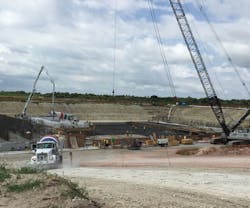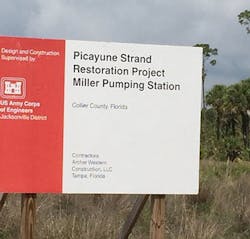By Christy Krone
The Comprehensive Everglades Restoration Plan (CERP) was authorized by Congress in 2000 as a plan to “restore, preserve, and protect the south Florida ecosystem while providing for other water-related needs of the region, including water supply and flood protection.” The $10.5 billion, 35+ year multi-agency project is the largest hydrologic restoration project ever undertaken in the United States.
The Picayune Strand Restoration Project is a component of CERP. Wetlands will be restored in Picayune Strand (Southern Golden Gate Estates) and in adjacent public lands by reducing over-drainage while restoring a natural and beneficial sheetflow of water to the Ten Thousand Islands National Wildlife Refuge. The project includes 83 miles of canal plugs, 227 miles of road removal, and the addition of three pump stations and spreader swales to aid in rehydration of the wetlands.
In partnership with the South Florida Water Management District (SFWMD), the U.S. Army Corps of Engineers (USACE) will operate the three large pump stations, which will transport water gathered from canals to previously drained wetlands and help maintain current levels of flood protection.
About the Pump Stations
The Picayune Strand project includes the construction of three pump stations: Merritt, Faka Union and Miller Pump Station.
The Merritt Pump Station facility includes a spreader canal and tie-back levee. It has two 75-cubic-feet-per-second (cfs) electrical pumps and four 220-cfs diesel pumps for a total capacity of 1,030 cfs. The maximum design flow for flood protection is 880 cfs using the four high-flow pumps.
Now operational, the Merritt Pump Station transports water from the Merritt Canal into a spreader basin for release to the downstream restoration area. Part of the project also included plugging 13.5 miles of canals to block water flow and the removal/degrading of 95 miles of roads and tram lines. The Merritt Pump Station was completed in 2014.





